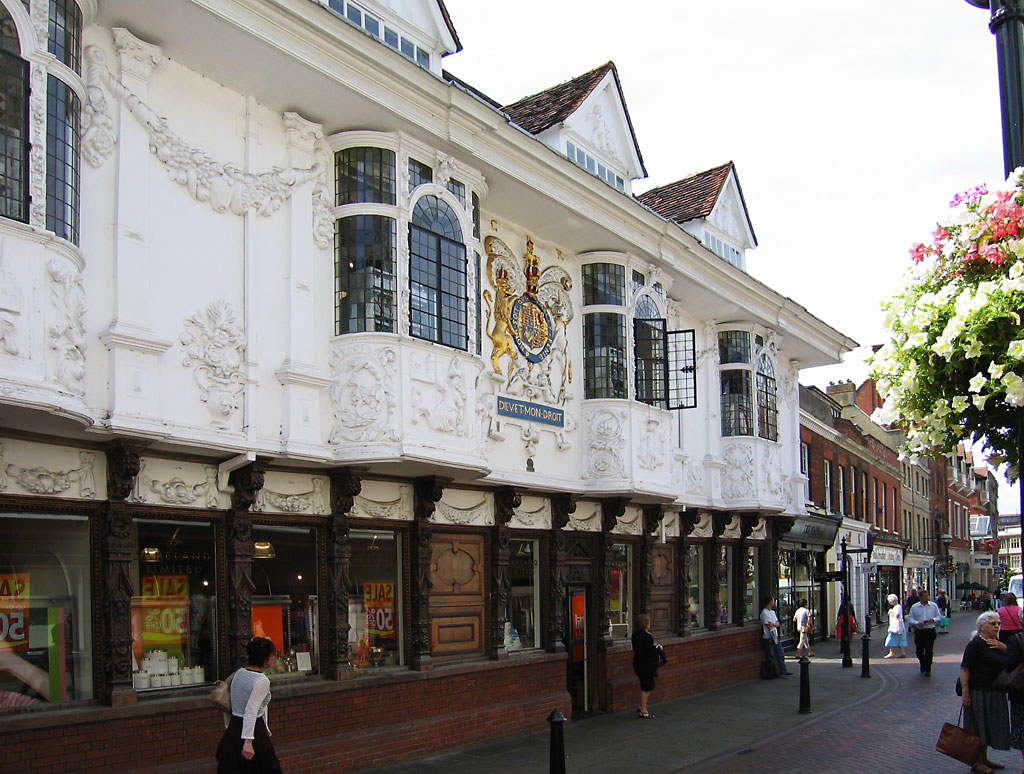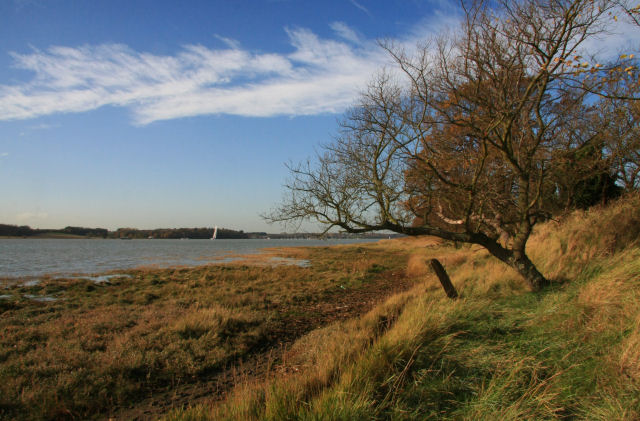|
Stoke Tunnel Cutting, Ipswich
Stoke Tunnel Cutting, Ipswich is a geological Site of Special Scientific Interest in Ipswich in Suffolk. It is a Geological Conservation Review site. This fossiliferous site dates to the late Marine Isotope Stage 7, around 190,000 years ago. It is part of a high level terrace of the River Orwell and it has European pond tortoises, lions, mammoths, woolly rhinoceros The woolly rhinoceros (''Coelodonta antiquitatis'') is an extinct species of rhinoceros that inhabited northern Eurasia during the Pleistocene epoch. The woolly rhinoceros was a member of the Pleistocene megafauna. The woolly rhinoceros was larg ...es, horses and voles. There is no public access to the site. References {{SSSIs Suffolk Sites of Special Scientific Interest in Suffolk Geological Conservation Review sites ... [...More Info...] [...Related Items...] OR: [Wikipedia] [Google] [Baidu] |
Site Of Special Scientific Interest
A Site of Special Scientific Interest (SSSI) in Great Britain, or an Area of Special Scientific Interest (ASSI) in the Isle of Man and Northern Ireland, is a conservation designation denoting a protected area in the United Kingdom and Isle of Man. SSSI/ASSIs are the basic building block of site-based nature conservation legislation and most other legal nature/geological conservation designations in the United Kingdom are based upon them, including national nature reserve (United Kingdom), national nature reserves, Ramsar Convention, Ramsar sites, Special Protection Areas, and Special Area of Conservation, Special Areas of Conservation. The acronym "SSSI" is often pronounced "triple-S I". Selection and conservation Sites notified for their Biology, biological interest are known as Biological SSSIs (or ASSIs), and those notified for geological or Physical geography, physiographic interest are Geological SSSIs (or ASSIs). Sites may be divided into management units, with some a ... [...More Info...] [...Related Items...] OR: [Wikipedia] [Google] [Baidu] |
Ipswich
Ipswich () is a port town and Borough status in the United Kingdom, borough in Suffolk, England. It is the county town, and largest in Suffolk, followed by Lowestoft and Bury St Edmunds, and the third-largest population centre in East Anglia, after Peterborough and Norwich. It is northeast of London and in 2011 had a population of 144,957. The Ipswich built-up area is the fourth-largest in the East of England and the 42nd-largest in England and Wales. It includes the towns and villages of Kesgrave, Woodbridge, Suffolk, Woodbridge, Bramford and Martlesham Heath. Ipswich was first recorded during the medieval period as ''Gippeswic'', the town has also been recorded as ''Gyppewicus'' and ''Yppswyche''. It has been continuously inhabited since the Anglo-Saxon settlement of Britain, Saxon period, and is believed to be one of the Oldest town in Britain, oldest towns in the United Kingdom.Hills, Catherine"England's Oldest Town" Retrieved 2 August 2015. The settlement was of great eco ... [...More Info...] [...Related Items...] OR: [Wikipedia] [Google] [Baidu] |
Suffolk
Suffolk ( ) is a ceremonial county in the East of England and East Anglia. It is bordered by Norfolk to the north, the North Sea to the east, Essex to the south, and Cambridgeshire to the west. Ipswich is the largest settlement and the county town. The county has an area of and a population of 758,556. After Ipswich (144,957) in the south, the largest towns are Lowestoft (73,800) in the north-east and Bury St Edmunds (40,664) in the west. Suffolk contains five Non-metropolitan district, local government districts, which are part of a two-tier non-metropolitan county administered by Suffolk County Council. The Suffolk coastline, which includes parts of the Suffolk & Essex Coast & Heaths National Landscape, is a complex habitat, formed by London Clay and Crag Group, crag underlain by chalk and therefore susceptible to erosion. It contains several deep Estuary, estuaries, including those of the rivers River Blyth, Suffolk, Blyth, River Deben, Deben, River Orwell, Orwell, River S ... [...More Info...] [...Related Items...] OR: [Wikipedia] [Google] [Baidu] |
Geological Conservation Review
The Geological Conservation Review (GCR) is produced by the UK's Joint Nature Conservation Committee. It is designed to identify those sites of national and international importance needed to show all the key scientific elements of the geological and geomorphological features of Britain. These sites display sediments, rocks, minerals, fossils A fossil (from Classical Latin , ) is any preserved remains, impression, or trace of any once-living thing from a past geological age. Examples include bones, shells, exoskeletons, stone imprints of animals or microbes, objects preserved ..., and features of the landscape that make a special contribution to an understanding and appreciation of Earth science and the geological history of Britain, which stretches back more than three billion years. The intention of the project, which was devised in 1974 by George Black and William Wimbledon working for the Governmental advisory agency, the Nature Conservancy Council (NCC), was ac ... [...More Info...] [...Related Items...] OR: [Wikipedia] [Google] [Baidu] |
Marine Isotope Stage
Marine isotope stages (MIS), marine oxygen-isotope stages, or oxygen isotope stages (OIS), are alternating warm and cool periods in the Earth's paleoclimate, deduced from Oxygen isotope ratio cycle, oxygen isotope data derived from deep sea core samples. Working backwards from the present, which is MIS 1 in the scale, stages with even numbers have high levels of oxygen-18 and represent cold glacial periods, while the odd-numbered stages are lows in the oxygen-18 figures, representing warm interglacial intervals. The data are derived from pollen and foraminifera (plankton) remains in drilled marine sediment cores, sapropels, and other data that reflect historic climate; these are called Proxy (climate), proxies. The MIS timescale was developed from the pioneering work of Cesare Emiliani in the 1950s, and is now widely used in archaeology and other fields to express dating in the Quaternary period (the last 2.6 million years), as well as providing the fullest and best data for th ... [...More Info...] [...Related Items...] OR: [Wikipedia] [Google] [Baidu] |
River Orwell
The River Orwell flows through the county of Suffolk in England from Ipswich to Felixstowe. Above Ipswich, the river is known as the River Gipping, but its name changes to the Orwell at Stoke Bridge, about half a mile below where the river becomes tidal by Bobby Robson Bridge on West End Road. It broadens into an estuary at Ipswich, where the Ipswich dock has operated since the 7th century, and then flows into the North Sea at Felixstowe, the UK's largest container port, after joining the River Stour at Shotley forming Harwich harbour. The large Orwell Bridge carries the A14 trunk road over the estuary to the south of Ipswich. Name In the name ''Orwell'', ''Or-'' comes from an ancient river-name—probably pre-Celtic; but ''-well'' probably indicates an Anglo-Saxon naming. In ''A tour through England and Wales'', written in 1722, Daniel Defoe calls the river "Orwel" (though he does this inconsistently). He also mentions that "a traveller will hardly understand me, especia ... [...More Info...] [...Related Items...] OR: [Wikipedia] [Google] [Baidu] |
European Pond Tortoise
The European pond turtle (''Emys orbicularis''), also called commonly the European pond terrapin and the European pond tortoise, is a species of long-living freshwater turtle in the family Emydidae. The species is endemic to the Western Palearctic. Subspecies The following 14 subspecies are recognized as being valid. *'' Emys orbicularis capolongoi'' – Sardinian pond turtle *'' Emys orbicularis colchica'' – Colchis pond turtle *'' Emys orbicularis eiselti'' – Eiselt's pond turtle *'' Emys orbicularis fritzjuergenobstii'' – Obst's pond turtle *''Emys orbicularis galloitalica'' – Italian pond turtle *'' Emys orbicularis hellenica'' – Western Turkey pond turtle *'' Emys orbicularis hispanica'' – Spanish pond turtle *'' Emys orbicularis iberica'' – Kura Valley pond turtle *''Emys orbicularis ingauna'' - Ligurian pond turle *'' Emys orbicularis lanzai'' – Corsican pond turtle *'' Emys orbicularis luteofusca'' – Central Turkey pond turtle *'' Emys orbicul ... [...More Info...] [...Related Items...] OR: [Wikipedia] [Google] [Baidu] |
Mammoth
A mammoth is any species of the extinct elephantid genus ''Mammuthus.'' They lived from the late Miocene epoch (from around 6.2 million years ago) into the Holocene until about 4,000 years ago, with mammoth species at various times inhabiting Africa, Asia, Europe, and North America. Mammoths are distinguished from living elephants by their (typically large) spirally twisted tusks and in some later species, the development of numerous adaptions to living in cold environments, including a thick layer of fur. Mammoths and Asian elephants are more closely related to each other than they are to African elephants. The oldest mammoth representative, '' Mammuthus subplanifrons'', appeared around 6 million years ago during the late Miocene in what is now southern and Eastern Africa.'''' Later in the Pliocene, by about three million years ago, mammoths dispersed into Eurasia, eventually covering most of Eurasia before migrating into North America around 1.5–1.3 million year ... [...More Info...] [...Related Items...] OR: [Wikipedia] [Google] [Baidu] |
Woolly Rhinoceros
The woolly rhinoceros (''Coelodonta antiquitatis'') is an extinct species of rhinoceros that inhabited northern Eurasia during the Pleistocene epoch. The woolly rhinoceros was a member of the Pleistocene megafauna. The woolly rhinoceros was large, comparable in size to the largest living rhinoceros species, the white rhinoceros (''Ceratotherium simum''), and covered with long, thick hair that allowed it to survive in the extremely cold, harsh mammoth steppe. It had a massive hump reaching from its shoulder and fed mainly on herbaceous plants that grew in the steppe. Mummified carcasses preserved in permafrost and many bone remains of woolly rhinoceroses have been found. Images of woolly rhinoceroses are found among cave paintings in Europe and Asia, and evidence has been found suggesting that the species was hunted by humans. The range of the woolly rhinoceros contracted towards Siberia beginning around 17,000 years ago, with the youngest known r ... [...More Info...] [...Related Items...] OR: [Wikipedia] [Google] [Baidu] |
Sites Of Special Scientific Interest In Suffolk
Site most often refers to: * Archaeological site * Campsite, a place used for overnight stay in an outdoor area * Construction site * Location, a point or an area on the Earth's surface or elsewhere * Website, a set of related web pages, typically with a common domain name It may also refer to: * Site, a National Register of Historic Places property type * SITE (originally known as ''Sculpture in the Environment''), an American architecture and design firm * Site (mathematics), a category C together with a Grothendieck topology on C * ''The Site'', a 1990s TV series that aired on MSNBC * SITE Intelligence Group, a for-profit organization tracking jihadist and white supremacist organizations * SITE Institute, a terrorism-tracking organization, precursor to the SITE Intelligence Group * Sindh Industrial and Trading Estate, a company in Sindh, Pakistan * SITE Centers, American commercial real estate company * SITE Town, a densely populated town in Karachi, Pakistan * S.I.T.E Indust ... [...More Info...] [...Related Items...] OR: [Wikipedia] [Google] [Baidu] |





